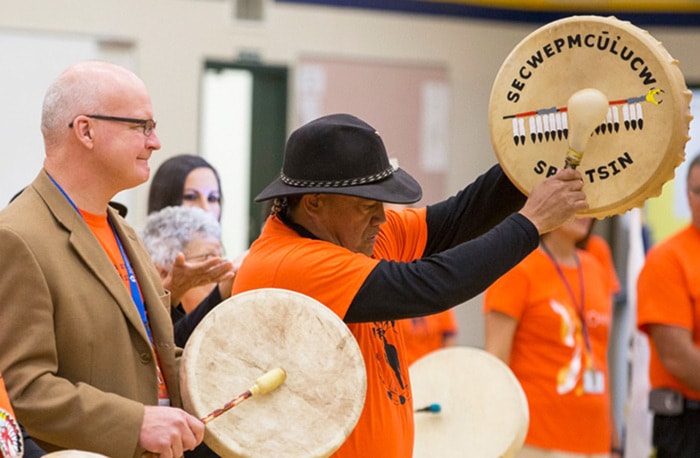The stories of residential schools aren’t going away.
Ethel Thomas, a residential school survivor spoke to the students and staff of Salmon Arm Secondary School recently.
“I was six years old when the priest came and took us away. I remember seeing my mother standing on the step, watching us,” she said through tears.
The Enderby resident was taken from her home for the first time, she estimated, in 1951, and was shipped to a residential school in Cranbrook.
“They stood me up in a chair and cut my braids off. They did that with all the kids, cut their hair.”
She was also treated poorly, separated from her brother, and forced to eat food off of the ground.
She recalled eating a piece of meat and disliking it, so she spat it out. Her supervisor told her to pick it up and eat it.
When she spat it on to the ground again, because of the taste, she was forced to pick it up and to make sure she swallowed the whole thing.
“I remember going to bed at night and feeling so lonely. I used to cry myself to sleep,” she said.
The 72-year-old wants people to understand the situation that First Nations people went through.
“There was a time in my life where I did consider suicide,” she said, adding that this was the first time she was giving any detail about her history in the residential school to her family.
The last residential school closed in Saskatchewan in 1996.
Splatsin Chief Wayne Christian also spoke to the SAS students.
“This event is important because the school district trustees agreed to the truth and reconciliation recommendation, so this event is to mark that recognition,” he said.
“It’s for the students to know and understand the hardships and what the impact the residential school had primarily on our parents and our grandparents. The residential schools really intended to kill the indian in the child. Our message is that our families are still here.”
The ceremony honoured those who attended the residential schools, students performed a drum song with their elders, and a short video was shown telling the story of how Orange Shirt Day started.
The story of the orange shirt started in 1973 with Phyllis Jack Webstad, from Williams Lake, who was stripped of her proudly-worn orange shirt when she was sent to residential school.
In 2013, the shirt became an official symbol to honour residential school survivors, and those who did not make it.
Orange Shirt Day, Sept. 30, is designated for truth and reconciliation for the residential school survivors.
